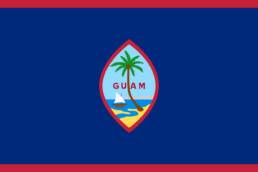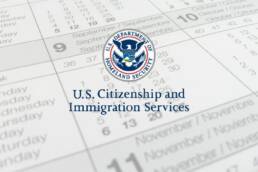The H-2B program allow a U.S. employer or agent to bring foreign nationals to the United States to fill temporary nonagricultural jobs. This classification requires a temporary labor certification issued by the Secretary of Labor. Currently, Congress has set the H-2B cap at 66,000 per fiscal year, with 33,000 for workers who begin employment in the first half of the fiscal year (October 1 – March 31) and 33,000 for workers who begin employment in the second half of the fiscal year (April 1 – September 30). Any unused numbers from the first half of the fiscal year will be available for employers seeking to hire H-2B workers during the second half of the fiscal year. However, unused H-2B numbers from one fiscal year do not carry over into the next. In recent years, the Department of Homeland Security (DHS), in consultation with the Department of Labor (DOL), has been authorized to increase the H-2B cap for certain years. These supplemental visas are often subject to specific conditions and may be allocated differently each year.
Basic Requirements
To issue an H-2B certification, the U.S. Department of Labor (DOL) must determine that:
- There are not sufficient U.S. workers; and
- The employment of H-2B workers will not adversely affect the wages and working conditions of similarly employed U.S. workers.
To participate in the H-2B program, an employer applicant must:
- Be an employer with a valid Federal Employer Identification Number (FEIN);
- Have a place of business (i.e., physical location) in the United States; and
- Have a means by which it can be contacted for employment.
The employer’s job opportunity/opportunities must be:
- Temporary (i.e. nine months or less, except one-time occurrences);
- Full-time (i.e. 35 or more hours per week); and
- Non-agricultural employment within a specified area(s) of intended employment.
Temporary need must be established as one of the following:
- One-time occurrence: the employer must establish that it has not employed workers to perform the work in the past and that it will not need workers to perform the work in the future, or that it has an employment situation that is otherwise permanent, but a temporary event of short duration has created the need for a temporary worker.
- Seasonal need: the employer must establish that the work is traditionally tied to a season of the year by an event or pattern and is of a recurring nature. An employer cannot claim a seasonal need if the period during which the work is not needed is unpredictable, subject to change, or considered a vacation period for the employer’s permanent employees.
- Peakload need: the employer must establish that it regularly employs permanent workers to perform the work at the place of employment and that it needs to supplement its permanent staff on a temporary basis due to a seasonal or short-term demand. The employer must also show that the temporary additions to staff will not become a part of the employer’s regular operation.
- Intermittent need: the employer must establish that it has not employed permanent or full-time workers to perform the work, but occasionally or intermittently needs temporary workers to perform services or labor for short periods.
With the exception of a one-time occurrence need which can last up to three years, temporary need will not be approved for longer than nine months.
Application Process
Step 1: Obtain a Prevailing Wage (Forms ETA-9141 and 9165). Employer must request and obtain a prevailing wage determination (PWD) from the OFLC Nation Prevailing Wage Center (NPWC) before filing an H-2B application. Employers are encouraged to file at least 60 days before the determination is needed.
Step 2: File a job order with the State Workforce Agency (SWA). Employers must file a job order with the appropriate SWA.
Step 3: Submit job order and H-2B labor certification to the Chicago National Processing Center (NPC). Employers must submit the H-2B labor certification (Form ETA-9142B and Appendices), supporting documents, and a copy of the job order filed with the SWA to the Chicago NPC 75-90 days prior to the date of need.
- When To File: Due to the H-2B cap, employers are encouraged file at the 90-day mark. In the past, the DOL would adjudicate applications in the order received, which resulted in major issues for the agency. As a result, the DOL implemented a 3-day filing window and randomized selection process. Employers that file an application during a 3-day filing window are considered to have filed at the 90-day mark. These applications are then randomly selected for adjudication. For an April 1st start date, the filing window is January 1st to January 3rd. For an October 1st start date, the filing window is July 3rd to July 5th.
Step 4: Review and Notice of Acceptance. The SWA reviews the job order for compliance within six business days of receipt. The Chicago NPC reviews the H-2B application and job order for compliance within seven business days of receipt. The NPC will then notify the employer in writing of the decision to either accept (Notice of Acceptance) or not accept (Notice of Deficiency) the employer’s application and/or job order. A Notice of Deficiency identifies the deficiencies found by the SWA and Chicago NPC and provides the employer the opportunity to address those deficiencies with the application and/or job order. Each notification will also provide the next steps for the employer to take.
Step 5: Conduct Recruitment of U.S. Workers. Within 14 days of receipt of a Notice of Acceptance, the employer must follow the instructions provided in the Notice of Acceptance and conduct recruitment, including placing newspaper advertisements; contacting former U.S. workers; contacting the bargaining representative (if any) or posting notice of the job opportunity to the employer’s current employees; and conducting any additional recruitment, if directed by the Certifying Officer.
The Certifying Officer in the Notice of Acceptance will specify a date for the employer’s initial recruitment report. After receipt of the initial recruitment report, the Chicago NPC will determine whether to certify or deny the application and issue the final determination. The final determination will be sent electronically to the employer and, if applicable, the employer’s attorney or agent.
- Important Note: After submitting the recruitment report, the employer must continue to update the report to include U.S. applicants until 21 days before the date of need.
Step 5: Submission to USCIS. The employer submits the Form ETA-9142B Final Determination: H-2B Temporary Labor Certification Approval, a copy of Appendix B, and information required by USCIS, with the petition package to the USCIS Service Center. The original Appendix B is retained in the employer’s retention file.
Document Retention Requirements
All employers filing an H-2B labor certification are required to retain certain documents and records proving compliance with the regulations, including:
- Documents and records not previously submitted during the registration process that substantiate temporary need.
- Proof of recruitment efforts, as applicable, including:
- Contact with former U.S. workers;
- Contact with bargaining representative(s), or a copy of the posting of the job opportunity; and
- Additional employer-conducted recruitment efforts.
- Substantiation of the information submitted in the recruitment report, such as evidence of non-applicability of contact with former workers.
- The final recruitment report and any supporting resumes and contact information.
- Records of each worker’s earnings, hours offered and worked, location(s) of work performed, and other information.
- If appropriate, records of reimbursement of transportation and subsistence costs incurred by the workers.
- Evidence of contact with U.S. workers who applied for the job opportunity, including documents demonstrating that any rejections of U.S. workers were for lawful, job-related reasons, as specified in § 655.20(r);
- Evidence of contact with any former U.S. worker in the occupation at the place of employment, including documents demonstrating that the U.S. worker had been offered the job opportunity, and that the U.S. worker either refused the job opportunity or was rejected only for lawful, job-related reasons.
- The written contracts with agents or recruiters and the list of the identities and locations of persons hired by or working for the agent or recruiter and these entities’ agents or employees.
- Written notice provided to and informing OFLC that an H-2B worker or worker in corresponding employment has separated from employment before the end date of employment.
- The H-2B Registration, job order and a copy of the Application for Temporary Employment Certification and the original signed Appendix B of the Application. If the Application for Temporary Employment Certification and H-2B Registration is electronically filed, a printed copy of each adjudicated Application for Temporary Employment Certification, including any modifications, amendments or extensions must be signed by the employer as directed by the CO and retained.
- The H-2B Petition, including all accompanying documents.
- Any collective bargaining agreement(s), individual employment contract(s), or payroll records from the previous year necessary to substantiate any claim that certain incumbent workers are not included in corresponding employment.
In the event of an audit, an employer is required to provide the information detailed above within 72 hours.



